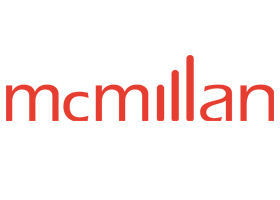


Changes on the Menu – 2nd Course: Canadian Food Inspection Agency Updates Implementation Plan for Food Labelling Rules
Changes on the Menu – 2nd Course: Canadian Food Inspection Agency Updates Implementation Plan for Food Labelling Rules
This bulletin is the second in our series reporting on recent updates of interest to those interested in or active in the Canadian food industry. For the first bulletin, on upcoming changes regarding simulated meat and poultry, see here.
On July 16, 2021, the Canadian Food Inspection Agency (“CFIA”) published a brief implementation plan update outlining the CFIA’s guidance regarding the next phase of compliance with food labelling rules originally introduced through the 2016 amendments[1] to the Food and Drug Regulations[2] (the “New Labelling Rules”). The New Labelling Rules apply to prepackaged products imported into Canada, manufactured in Canada, or packaged at retail.
While certain amendments came into effect immediately (i.e. those specifications relating to food and synthetic colours), the New Labelling Rules provide for a five-year transition period, with the deadline to comply occurring later this year on December 14, 2021. As of this date, food products must be labelled in accordance with the New Labelling Rules, which include changes regarding text size, font and colour, templates for Nutrition Facts tables, mandatory information in Nutrition Facts tables and the listing of ingredients.
What did the CFIA provide (or not provide) updates on?
Mandatory compliance is coming, but enforcement details are minimal
Until the end of the current period, CFIA will continue to provide guidance on the interpretation of the New Labelling Rules and its inspection activities will focus on availability and accuracy of mandatory information. From December 15, 2021 to December 14, 2022 (“Compliance Phase I”), the CFIA stated that the “CFIA’s efforts will continue to be directed towards education and promoting compliance with the new requirements at all levels of trade”. Tools and training provided by the CFIA will focus on the New Labelling Rules as opposed to compliance. In fact, the sole guidance offered on compliance is that the “the CFIA may take action in cases of inaccurate, false or misleading labelling information”. However, the scope and severity of CFIA enforcement of the New Labelling Rules remain open questions.
Compliance could come through an alternate route, until December 14, 2023
The CFIA revealed that following Compliance Phase I, from December 15, 2022 to December 14, 2023, the CFIA will exercise its “enforcement discretion” where a party presents a “detailed plan” for meeting the New Labelling Rules as early as possible, and in any event no later than December 14, 2023. In particular, the CFIA added that:
[a] “detailed plan” could be similar to a corrective action plan that regulated parties provide in response to a report of noncompliance…
For reference, this example of a corrective action(s) record provides insight into what information and disclosure may be collected by the CFIA as part of an acceptable detailed plan.
Manufacturers, importers and others caught by the New Labelling Rules should review their plans for implementation to prepare themselves for the upcoming transition period deadline of December 14, 2021. Once the transition period has ended, the former regulations are no longer in effect and parties will be expected to comply with the New Labelling Rules, unless they have worked with CFIA to develop a detailed proposal outlining their strategy to be compliant by no later than December 14, 2023. While it appears that CFIA will not be strictly enforcing the New Labelling Rules in all circumstances of non-compliance during the remaining periods of implementation, it may take action in cases of inaccurate, false or misleading information. Therefore impacted parties are encouraged to familiarize themselves with the requirements and address concerns or seek clarity sooner rather than later.
Meanwhile, CFIA continues to roll-out related guidance on food labelling for specific products that are growing in popularity. For example, this includes the use of soy protein isolate or hydrolyzed soy protein added to meat products being permitted as a “filler”, with compliance necessary as of February 18, 2022.
Conclusion
McMillan’s Regulatory Group remains available to assist companies affected by or interested in the New Labelling Rules, including conducting more detailed analysis of applicability of the requirements or answering compliance and risk-related questions and concerns.
[1] Regulations Amending the Food and Drug Regulations (Nutrition Labelling, Other Labelling Provisions and Food Colours), SOR/2016-305.
[2] Food and Drug Regulations, CRC, c 870.
by Julia Loney and Jacob Stucken
A Cautionary Note
The foregoing provides only an overview and does not constitute legal advice. Readers are cautioned against making any decisions based on this material alone. Rather, specific legal advice should be obtained.
© McMillan LLP 2021
Insights (5 Posts)View More
Ontario (Might get the) Right to Repair – An overview of Bill 187 the Right to Repair Consumer Electronic Products, Household Appliances, Wheelchairs, Motor Vehicles and Farming Heavy Equipment Act, 2024
Ontario considers new right to repair legislation for consumer products and motor vehicles.
More Than Meets the Eye: The Legal Implications of British Columbia’s Agreement to Recognize Aboriginal Title Over Haida Gwaii
An analysis of legal implications related to the BC Government's agreement with the Haida Nation to recognize Aboriginal title over Haida Gwaii.
Lessons Learned from the TTC’s Ransomware Attack
Lessons learned from the recent investigation by the Ontario IPC into the effectiveness of the TTC's cybersecurity measures and ransomware attack response
Don’t Get Caught by Canada’s Patent Novelty Grace-Period
The key difference between Canada and other jurisdictions like the United States when relying on the grace-period for inventor disclosures.
Shifting Gears – Canada to Consider New Motor Vehicle Equipment Regulations to Help Prevent Auto Theft
Transport Canada announces plan to update safety standards to combat auto theft.
Get updates delivered right to your inbox. You can unsubscribe at any time.






